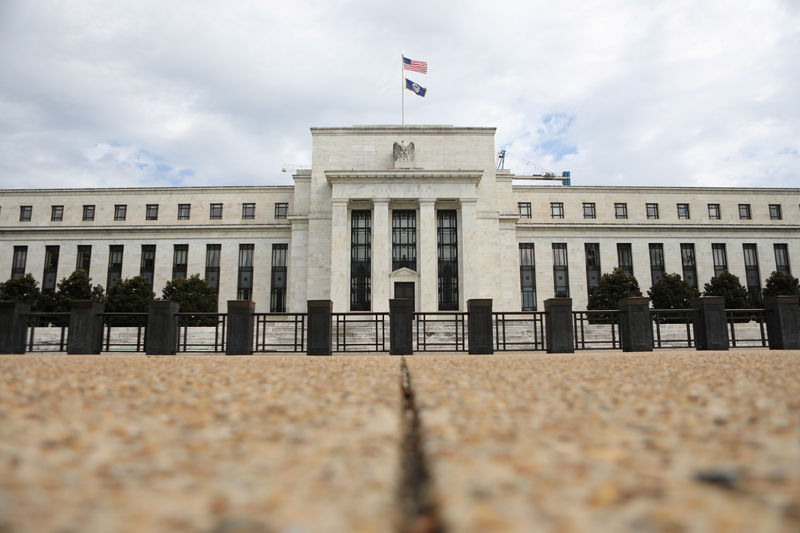Investing.com - Federal Reserve policymakers expressed more willingness to adopt a slower pace of rate hikes at their December meeting, as concerns about global growth and subdued inflation made the timing of future rate hikes less certain, minutes published Wednesday showed.
The Fed raised its benchmark rate to a range of 2.25% to 2.5% at the conclusion of its two-day policy meeting on Dec. 19 and signalled two rate hikes were on the table for 2019.
While Fed members at the meeting supported "some further gradual" rate hikes, there was increasing uncertainty about the timing of hikes, as worsening financial conditions and slowing global growth clouded the path to future rate hikes, according to the minutes.
"Participants expressed that recent developments, including the volatility in financial markets and the increased concerns about global growth, made the appropriate extent and timing of future policy firming less clear than earlier," the Fed said in the minutes. "Against this backdrop, many participants expressed the view that, especially in an environment of muted inflation pressures, the Committee could afford to be patient about further policy firming."
The Fed's somewhat dovish outlook expressed in minutes echoed a recent shift in tone on policy tightening from Fed members, including Chairman Jerome Powell, prompting some to predict the Fed may raise rates just once, if at all, this year.
In his press conference that followed the Fed’s December meeting, Powell said the central bank’s balance sheet trimming was on “autopilot.” But he walked back those comments last week, reassuring investors the Fed would be flexible with all of its policy tools, including the balance sheet.
"If incoming information prompted meaningful reassessments of the economic outlook and attendant risks, either to the upside or the downside, their (Fed members) policy outlook would change," the minutes said.
According to Investing.com's Fed Rate Monitor Tool, traders believe there's little chance the Fed will hike rates this year, pricing in a roughly 25% chance of a hike in the second half of the year.
The pace of economic growth, while expected to remain "strong" over the next two years is predicted to slow.
"Over the 2018-20 period real GDP was forecast to rise at a rate above the staff's estimate of potential output growth and then slow to a pace below it in 2021," the minutes said.
The minutes also showed that Fed members were split on the inflation outlook as "a few participants pointed to the decline in longer-term inflation compensation as an indication that longer-run inflation expectations may have edged lower, while several others cited survey-based measures as suggesting that longer-run expectations likely remained anchored."
In a sign that the Fed is preparing to take a more data-driven approach to future policy decisions, the minutes highlighted that "several participants expressed the view that it might be appropriate over upcoming meetings to remove forward guidance entirely and replace it with language emphasizing the data-dependent nature of policy decisions."
The release of the minutes comes as some on Wall Street voiced concerns about U.S. economic growth in the wake of the weaker ISM manufacturing and services reports.
"Following the moves in financial conditions, oil prices and foreign growth, we expect the 2019 slowdown to be more pronounced in the more sensitive areas of manufacturing and business investment, reminiscent of the 2015 to 2016 episode," Goldman Sachs (NYSE:GS) said in a note to clients earlier this week.
